
A siege is a military blockade of a city, or fortress, with the intent of conquering by attrition, or by well-prepared assault. This derives from Latin: sedere, lit. 'to sit'. Siege warfare is a form of constant, low-intensity conflict characterized by one party holding a strong, static, defensive position. Consequently, an opportunity for negotiation between combatants is common, as proximity and fluctuating advantage can encourage diplomacy.

A battering ram is a siege engine that originated in ancient times and was designed to break open the masonry walls of fortifications or splinter their wooden gates. In its simplest form, a battering ram is just a large, heavy log carried by several people and propelled with force against an obstacle; the ram would be sufficient to damage the target if the log were massive enough and/or it were moved quickly enough. Later rams encased the log in an arrow-proof, fire-resistant canopy mounted on wheels. Inside the canopy, the log was swung from suspensory chains or ropes.
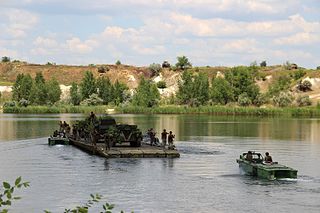
Military engineering is loosely defined as the art, science, and practice of designing and building military works and maintaining lines of military transport and military communications. Military engineers are also responsible for logistics behind military tactics. Modern military engineering differs from civil engineering. In the 20th and 21st centuries, military engineering also includes CBRN defense and other engineering disciplines such as mechanical and electrical engineering techniques.

A fortification is a military construction designed for the defense of territories in warfare, and is used to establish rule in a region during peacetime. The term is derived from Latin fortis ("strong") and facere.
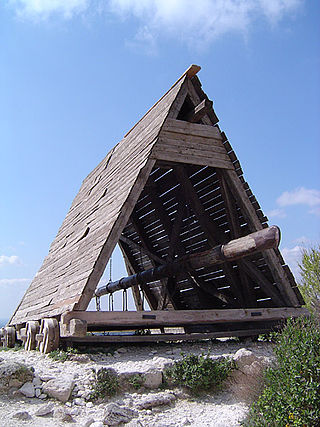
A siege engine is a device that is designed to break or circumvent heavy castle doors, thick city walls and other fortifications in siege warfare. Some are immobile, constructed in place to attack enemy fortifications from a distance, while others have wheels to enable advancing up to the enemy fortification. There are many distinct types, such as siege towers that allow foot soldiers to scale walls and attack the defenders, battering rams that damage walls or gates, and large ranged weapons that attack from a distance by launching projectiles. Some complex siege engines were combinations of these types.
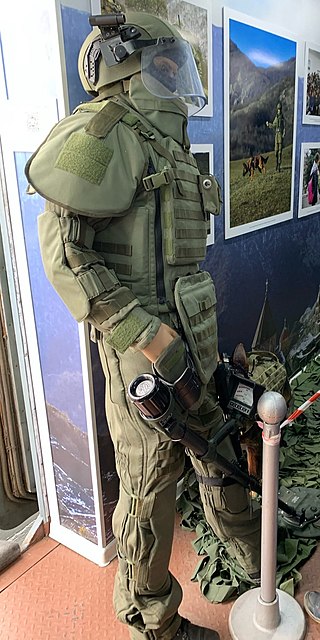
A sapper, also called a combat engineer, is a combatant or soldier who performs a variety of military engineering duties, such as breaching fortifications, demolitions, bridge-building, laying or clearing minefields, preparing field defenses, and road and airfield construction and repair.

The siege of Maastricht took place from 15 to 30 June 1673 during the Franco-Dutch War of 1672 to 1678, when a French army captured the Dutch fortress of Maastricht. The city occupied a key strategic position on the Meuse river and its capture was the main French objective for 1673; it was returned to the Dutch under the terms of the 1678 Treaty of Nijmegen.
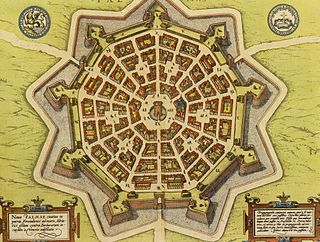
A bastion fort or trace italienne is a fortification in a style that evolved during the early modern period of gunpowder when the cannon came to dominate the battlefield. It was first seen in the mid-fifteenth century in Italy. Some types, especially when combined with ravelins and other outworks, resembled the related star fort of the same era.
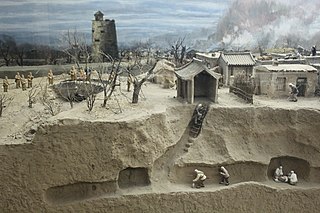
Tunnel warfare involves war being conducted in tunnels and other underground cavities. It often includes the construction of underground facilities in order to attack or defend, and the use of existing natural caves and artificial underground facilities for military purposes. Tunnels can be used to undermine fortifications and slip into enemy territory for a surprise attack, while it can strengthen a defense by creating the possibility of ambush, counterattack and the ability to transfer troops from one portion of the battleground to another unseen and protected. Also, tunnels can serve as shelter from enemy attack.

The siege of Tuyên Quang was an important confrontation between the French and the Chinese armies in Tonkin during the Sino-French War. A French garrison of 619 men, including two companies of the French Foreign Legion, successfully defended the French post of Tuyên Quang against vastly outnumbering Chinese forces in a four-month siege from 24 November 1884 to 3 March 1885. 'Tuyên Quang 1885' remains one of the Legion's proudest battle honours.

The siege of Maastricht was fought between 9 June and 22 August 1632, when the Dutch commander Frederick Henry, Prince of Orange, eventually captured the city from Habsburg forces.
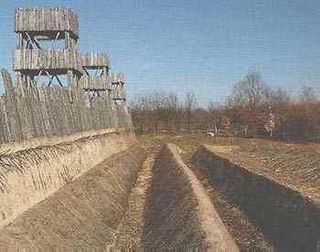
Investment is the military process of surrounding an enemy fort with armed forces to prevent entry or escape. It serves both to cut communications with the outside world and to prevent supplies and reinforcements from being introduced.
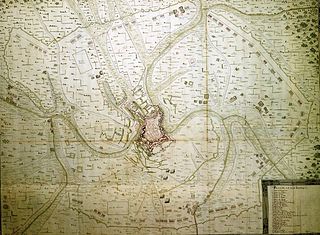
The siege of Luxembourg, in which Louis XIV of France laid siege to the Spanish-controlled Fortress of Luxembourg from 27 April to 7 June 1684, was the most significant confrontation of the War of the Reunions between France and Spain. The action caused alarm among France's neighbours and resulted in the formation of the League of Augsburg in 1686. In the ensuing war France was forced to give up the duchy, which was returned to the Habsburgs by the Treaty of Ryswick in 1697.

The siege of Ciudad Rodrigo, had the Viscount Wellington's Anglo-Portuguese Army besiege the city's French garrison under General of Brigade Jean Léonard Barrié. After two breaches were blasted in the walls by British heavy artillery, the fortress was successfully stormed on the evening of 19 January 1812. After breaking into the city, British troops went on a rampage for several hours before order was restored. Wellington's army suffered casualties of about 1,700 men, including two generals killed. Strategically, the fall of the fortress opened the northern gateway into French-dominated Spain from British-held Portugal. An earlier siege of the city occurred in 1810 in which the French captured it from Spanish forces.

The siege of Grol in 1627 was a battle between the Army of the Dutch Republic, commanded by Frederick Henry, Prince of Orange, and the Spanish-controlled fortified city of Grol, during the Eighty Years War and the Anglo–Spanish War in 1627. The Spanish Army, led by Hendrik van den Bergh, came to relieve Grol but too late. The siege lasted from 20 July until 19 August 1627, resulting in the surrender of the city to the Dutch army.

The siege of Godesberg, 18 November – 17 December 1583, was the first major siege of the Cologne War (1583–1589). Seeking to wrest control of an important fortification, Bavarian and mercenary soldiers surrounded the Godesberg, and the village then of the same name, now Bad Godesberg, located at its foot. On top of the mountain sat a formidable fortress, similarly named Godesburg, built in the early 13th century during a contest over the election of two competing archbishops.


The flexible defense is a military theory about the design of modern fortifications. The examples of "flexible" defense-lines are not based on dense lines of heavily armed, large and expensive concrete fortifications as the systems such as the Maginot Line were. Their protective capacity hinges on multiple lines of obstacles and small shelters fitting into the environment. They are "flexible" because soldiers are not locked in pillboxes, but fight instead in easily replaceable open earth-wood made positions, while bunkers serve only as shelters during bombardments. As a result, they are able to adapt to the opponent's movements, and there are no easily targeted large buildings in these lines.
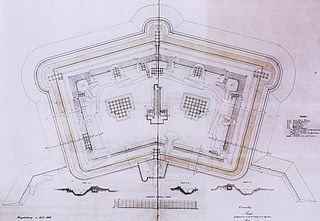
A polygonal fort is a type of fortification originating in France in the late 18th century and fully developed in Germany in the first half of the 19th century. Unlike earlier forts, polygonal forts had no bastions, which had proved to be vulnerable. As part of ring fortresses, polygonal forts were generally arranged in a ring around the place they were intended to protect, so that each fort could support its neighbours. The concept of the polygonal fort proved to be adaptable to improvements in the artillery which might be used against them, and they continued to be built and rebuilt well into the 20th century.





















